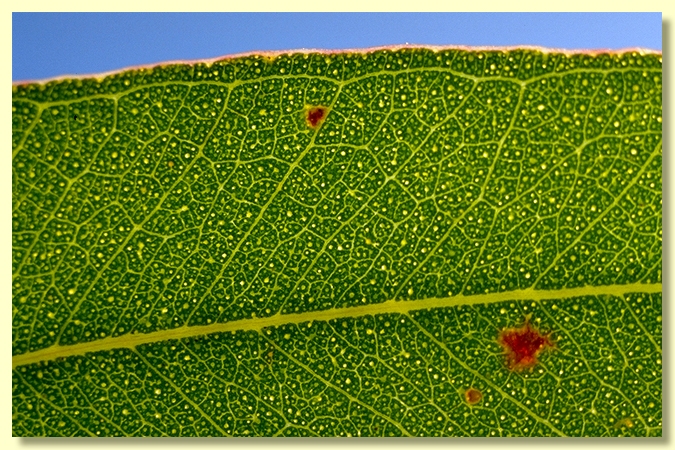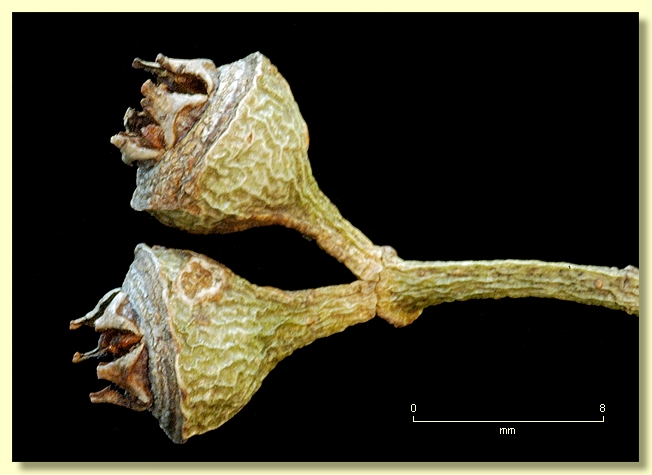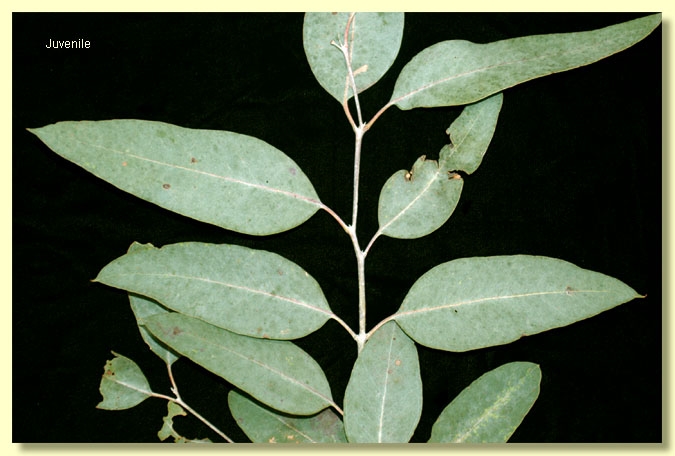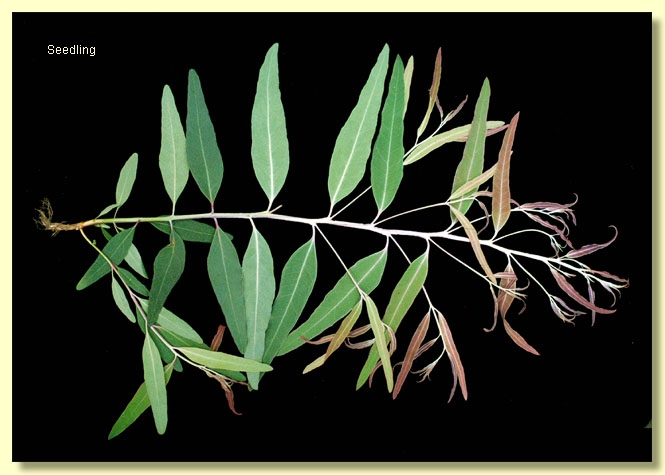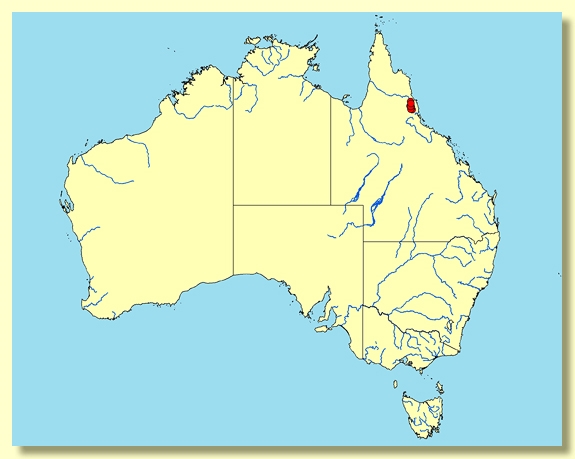Eucalyptus | Symphyomyrtus | Exsertaria | Phaeoxylon
Euclid - Online edition
Eucalyptus lockyeri subsp. lockyeri
Small tree to c. 9 m tall, often multi-stemmed and mallee-like. Forming a lignotuber.
Bark usually rough to the base of the branches, sometimes rough only on the lower trunk, fibrous to flaky, dark grey. Smooth bark grey to pink-brown to orange-brown.
Juvenile growth (coppice or field seedlings to 50 cm): stem square or rounded in cross-section, glaucous but glaucescence fading with age; juvenile leaves petiolate, opposite for 4 to 7 pairs, then alternate, lanceolate to broadly lanceolate to ovate, (6)8–16 cm long, 3.5–5.5 cm wide, dull, blue-grey to glaucous.
Adult leaves alternate, petiole 1–3.2 cm long; blade lanceolate to broadly lanceolate, (7)9–15 cm long, (1)2–3.5(4.5) cm wide, base tapering to petiole, concolorous, new growth glaucous, maturing to dull, blue-grey to green, occasionally slightly glossy, side-veins acute or at an angle greater than 45° to midrib, moderately to densely reticulate, intramarginal vein parallel to the margin, oil glands island.
Inflorescence axillary unbranched, peduncles (0.3)0.8–1.7 cm long, buds 7 per umbel, pedicellate (pedicels 0.2–0.5 cm long). Mature buds ovoid (1–1.3 cm long, 0.5–0.7 cm wide), glaucous, smooth, scar present, operculum conical to horn-shaped to slightly beaked (0.8–1 cm long), stamens erect, anthers cuboid to oblong, versatile, dorsifixed, dehiscing by longitudinal slits (non-confluent), style long, stigma tapered, locules 4(5), the placentae each with 6 vertical ovule rows. Flowers white.
Fruit pedicellate (pedicels 0.2–0.5 cm long), hemispherical, rarely campanulate tending to obconic, 0.3–0.7 cm long, 0.6–1(1.2) cm wide, glaucous but glaucescence fading with age, disc raised, oblique to convex, valves 4(5), strongly exserted.
Seeds dark brown to black, 0.5–1.2 mm long, pyramidal or cuboid, dorsal surface pitted, hilum terminal.
Cultivated seedlings (measured at ca node 10): cotyledons small, reniform to oblong; stems square in cross-section and sometimes winged, slightly to quite glaucous; leaves always petiolate, opposite for 4 to 8 nodes, becoming alternate, lanceolate to broadly lanceolate to rarely ovate, (4.5)6–14 cm long, 1.5–5 cm wide, base tapering, apex rounded to pointed, glaucous to blue-grey.
Flowering has been recorded in March, May and December.
A small tree restricted to the area just NW of Ravenshoe to just W of Herberton on the Atherton Tablelands of North Queensland. Usually found on sites with poor rocky soil. Characterised by the rough bark on the lower trunk, the relatively broad, glaucous juvenile leaves and the glaucous adult leaves, buds and fruit.
Eucalyptus lockyeri subsp. lockyeri belongs to a group of red gums that is distinguished by having rough bark, buds with the stamens mostly erect, fruit where the disc is united to the ovary roof and by the dark brown to black, toothed, cuboid to pyramidal single-coated seed. This group has six taxa occurring from central New South Wales north to New Guinea. They are E. brassiana, E. lockyeri subsp. lockyeri, E. lockyeri subsp. exuta, E. ammophila, E. exserta and E. morrisii. Within this group E. lockyeri subsp. lockyeri can be easily distinguished by its glaucous adult leaves, buds and fruit (adult leaves, buds and fruit for the others not glaucous).
There are two subspecies:
E. lockyeri subsp. lockyeri
Distinguished by having glaucous leaves, buds and fruit.
E. lockyeri subsp. exuta
Is very similar in bark characters to subsp. lockyeri, with at least 1–2 m of rough bark on the trunk and then smooth reddish-brown bark above that. It can be easily distinguished by its lack of glaucescence (visible wax) on the leaves, buds and young fruit.
Eucalyptus lockyeri: after Michael Lockyer of Ravenshoe, Queensland, who has a keen interest in the flora of the Atherton Tableland and who first drew the authors' attention to this taxon.



